Wearable devices are:
Wearable: the device is worn on the body throughout its use, it should not need to be carried.
Controllable: the device is controllable by the user, either actively or passively.
Enhancing: the device will augment knowledge, facilitate learning, or enhance experiences.
One of my posts on Wearable Technology was viewed by a lot of people in the first week I posted it on my other blog (80 is a lot in my world!). When I originally came across the website (which I only summarized and repeated the information), I had intended to comb back through and discuss which ones could be relevant for many carers and people with dementia. This is what I have done my PhD on (you can read more at PhD is Finished!, with pictures!), so I am particularly excited to do this. This list is compiled with the intent for supporting living with dementia and in care, and many of the technologies will be appropriate for home care.
My goal of this post is to use my background in dementia care technologies helps to sort through all the information and narrow in on ones that have helped others in dementia caring. I am not endorsing these particular technologies, but giving examples of what is currently available and most likely to be useful.The main point is to get the word out there about which technologies are even available. And there is a LOT of information out there.
Of course, not all these examples will suit everyone. In fact, determining which technology gives you the most meaning and fits best into your life are the most important aspects when deciding on a technology, and that makes the decision quite individual. I have included pictures and videos to give you a good overview of each device. You don’t have to read this whole post, it’s quite long 😉 Feel free to scroll through and check out those that interest you most.
I will try to keep updating and revising the list, so please think of them as a work in progress. If you have used any of these or know of other wearables that could be included in this list, please let us know in the comments below 🙂 This infograph, below, will give you a peek at where engineers and health professionals see technologies taking a more active role in supporting health.

Wearable Devices – where worn, functions, and possible benefits in dementia care
If you know someone with dementia who has a history and/or risk for leaving the home or becoming lost, address the issue and take steps to help them get home safe if they should become disoriented. A good start could be Medic Alert® + Alzheimer’s Association Safe Return®. It is a 24-hour (USA) nationwide emergency response service for individuals with Alzheimer’s or related dementia. It is $55+S&H and there will be an annual $35 membership renewal fee. The Alzheimer’s Association also offers safety services that use GPS and mobile technology.Comfort Zone® and Comfort Zone Check-In® can help you manage a person’s location. Comfort Zone includes MedicAlert + Safe Return. The Comfort Zone plans start at $42.99 per month plus a $45 activation fee. Read more:http://www.alz.org/care/dementia-medic-alert-safe-return.asp#ixzz2vPP3wcX3
3L Labs Footlogger – Worn on the feet. The 3L Labs Footlogger is a fitness tracking device that aims at spotting health problems early, as well as logging daily activity. Placed in the user’s shoe, 8 sensors coupled to 1 accelerometer help identify and record exercise habits. The data is then disclosed to the user via text or smartphone app. Footlogger can be used for athletes training, regular everyday workouts and rehabilitation.
This device costs $100 and could be used in rehabilitation, after a fall or surgery perhaps. It could also be used to detect gait changes (common in dementia progression), predict or distinguish falls, track location, etc.


Another seat sensor is the Sensimat, designed for wheelchair users (but I could also imagine benefits for those who sit most of the day). It is an intelligent pressure mat that can connect with a smart phone. With Sensimat, you can set alerts, track pressure reliefs and set notifications for when it’s time to move in order to relive pressure, and analyze pressure relief trends, allowing you to monitor and manage pressure sore prevention. You can find out more through their website or blog, and write them to inquire about pricing.

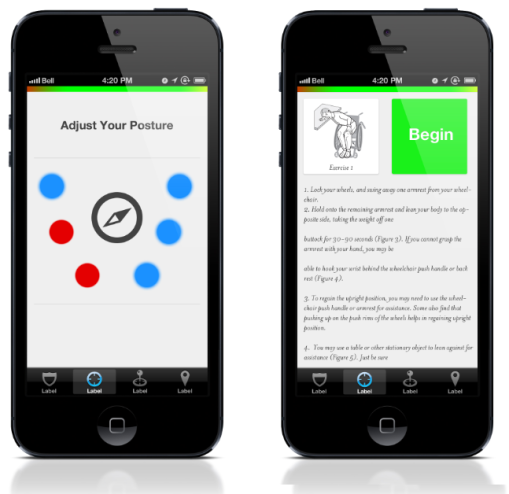
9Solutions IPCS Products – Worn on wrist, chest, waist or legs. 9Solutions has a number of Integrated Positioning and Communication System (IPCS). These devices’s primary function is a indoor positioning system which can track and monitor locations of the wearer based on an array of wireless technology (Bluetooth, RFID, Infrared, Ultra Wide Band, Ultrasound, Wi-Fi, Zigbee). The wearable devices communicates it’s location to a number of pre-deployed sensor node that tracks the location of the wearer.
This device allows for real time tracking and both indoor and outdoor position locating. Guided by their motto “Keep it Simple”, they offer simple and user-friendly solutions, providing locating accuracy, an easy installation process, low maintenance costs and open application programming interfaces.
They have a service specifically designed for dementia care (9Solutions Dementia Care product 9S-SWL-01-02) and a number of other technologies that can help in the home, hospitals, or care centers. They can assist with giving people with dementia a chance to live their daily life in a more independent way, monitoring the person’s movements discreetly and in real time. There is no alarm when the person with dementia moves in the permitted areas, such as within the facility or in the yard, and an automatic alarm is sent to family or nursing staff if the person exits the designated area. There is also door surveillance which helps with specifying permitted areas for groups or even for individuals, e.g. according to certain times and days of the week.

The device costs €3,350, so may be a bit out of most carers’ price range. The device seems to be targeted towards hospitals or care homes, but could also work in a private home. Check out their webpage or one of their videos for more information:
Amiigo Fitness Band – Worn on feet and wrist. The Amiigo Fitness Band is a two-piece smart system made of a bracelet and a shoe clip. The devices work as fitness and sleep monitors by evaluating body temperature, heart-rate and recording physical activity (type of activity and calories burned). The system uses a smartphone application available in the Apple App Store and Google Play to analyze the data and track performance.
 The Amiigo Fitness Band costs range from $90-$200. The device seems geared towards athletic training in healthy adults, but I also see implications for rehabilitation in aging adults and for general health and activity tracking. It has the functions of activity recognition, heart rate monitoring, body temperature monitoring, sleep tracking, step counting, exercise tracking, and calories burned. All this information is sent to the software program, so the user can see their totals, progress, identify patterns, and use the information to discuss health concerns with their doctors. This video provides a bit more information:
The Amiigo Fitness Band costs range from $90-$200. The device seems geared towards athletic training in healthy adults, but I also see implications for rehabilitation in aging adults and for general health and activity tracking. It has the functions of activity recognition, heart rate monitoring, body temperature monitoring, sleep tracking, step counting, exercise tracking, and calories burned. All this information is sent to the software program, so the user can see their totals, progress, identify patterns, and use the information to discuss health concerns with their doctors. This video provides a bit more information:
Basis B1 – Worn on wrist. The Basis B1 is an activity monitor that measures every aspect of your life. With one of the largest arrays of sensors on a wrist band, the B1 measures REM, light and deep sleep as well as activity duration (walking, running, biking) and calories burned. Overall the objective of the B1 is to reduce stress and increase performance.
The battery lasts up to 4 days of use before recharging and the operating temperature range is between 0°C and 40°C. The device costs $200.
The Basis band contains advanced sensors that capture heart rate patterns, motion, calorie expenditure by activity, multiple sleep stages, including REM—even perspiration and skin temperature. All of this data is captured 24/7. The only thing required of you is to wear it. Like other wristbands to collect information via contact with the skin, the band must be worn snugly, which could irritate or distract a person with dementia. Watch for rashes, blisters, and skin tears if you use a wristband as your assistive technology.
In the accompanying computer program, you can also see the times when the wearer tossed and turned, and when they got up to drink water, use the bathroom, or whatever other reason. This would be particularly useful if the person with dementia does not sleep well or moves around the house during the night. Poor sleep is associated with more problem behaviors and can lead to depression! This could also be useful for long-distance carers who want a more accurate picture of nighttime activities.
This seems like a simple enough device to be worn by people with dementia (a larger watch worn all the time, only 4 buttons) and can be used to monitor basic vital signs (heart rate, temperature) as well as detect sleeping patterns. However, the backlighting is quite dim, so probably not appropriate for those with vision issues. One plus is that it automatically registers when the wearer is sleeping, whereas the FitBit and others need to be activated for sleep mode.
The Engadget review of the wrist band said “The Basis B1 Band is one of the most comprehensive trackers out there, but it’s also the most expensive at $199. At just $99, both the FitBit One and Withings Pulse offer better value for the money, but if you’re in need of serious metric tracking you’d be be wise to consider the Basis B1 Band.” The Engadget website also lets you compare several devices (and you are likely to learn about some new ones). Check it out their website to compare mobile phones, tablets, tvs, etc.
Bionym Nymi Wristband – Worn on wrist. The Nymi is an authentication device that uses your body’s unique cardiac signal to unlock a computer, smartphone, car and any other device with Bluetooth authentication enabled. The user is first authenticated by placing the Nymi on their wrist and touching the top of the device with their finger. The user will remain authenticated as long as the Nymi is worn. Each charge lasts approximately one week.
The wristband costs $100 and can currently be pre-ordered for $80. Please note that as of August, 2015, Nymi is not yet available to the public for general use.
As you wake up know that wherever you go the Nymi will be interacting with your devices, creating a smart, password and key-free environment. The Nymi will also have customizable notifications. I can see this having a few implications, particularly in Smart Homes where the user is recognized and the services accomodate the user. It can also be used to authenticate bank cards (based on the unique heartbeat) so can be helpful if the person with dementia forgets their PIN code or has difficulties counting money. The accelerometer and gyroscope can be used to detect falls or can be used so that gestures initiate activities (such as opening the door hands free).
I think this one is a great idea! When I was working in day programs for people with young-onset dementia in 2014, during one of our discussions, a few of them mentioned that they wish there was something to help them remember PIN codes for their bank card or the door code for their home. I had told them about the Nymi and they seemed very interested, because they could still go out independently and go shopping, but often had a hard time remembering the code when they went to pay for something.
Emotiv Insight will allow you to optimize your brain fitness and performance, measure and monitor your own or your family’s cognitive health & wellbeing, and develop amazing new brain-computer interface (BCI) applications.
Insight measures and tracks 8 different key brain states: attention, focus, engagement, interest, excitement, affinity, relaxation and stress levels. These are also in the range of emotions someone with dementia experiences, but they may have increasing difficulty understanding and expressing it. At least from a research perspective, I think this has a lot of application for dementia care and being able to accomodate the care to the person’s mood, such as with Ambient Assisted Living.
The Emotiv Insight will also be capable of detecting facial expressions such as blinks, winks, frowns, surprise, clenches, and smiles. This has some obvious benefits in dementia care, either as carers to gain a better understanding of the moods and cognitive functions, and also for researchers/health professionals who want to understand the behavioral and psychological patterns that accompany dementia. This is the next generation of the BCI technology that allows paralyzed individuals to drive their wheelchair or to type, so it has some great potential!!
Insight is fully compatible with Android, iOS, Mac, Linux and Windows Platforms – it has a software program that allows you to look at all the fun stuff it is recording. In dementia care, this means you could also have a view of how their brain AND their moods are changing over time. This has implications for adjusting medications and level of care as well.
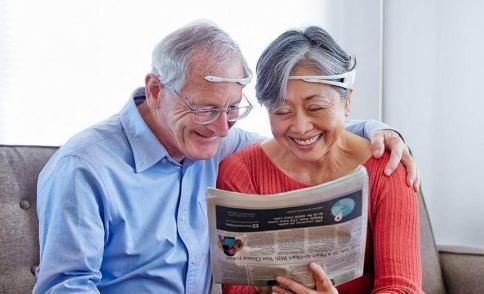 They reached their Kickstarter goal and will launch the product in Summer 2015 at $299. The video on their Kickstarter page is pretty exciting (for me!), check it out here:
They reached their Kickstarter goal and will launch the product in Summer 2015 at $299. The video on their Kickstarter page is pretty exciting (for me!), check it out here:
Empatica has designed the Embrace watch and the E4 wristband.

The E4 measures Blood Volume Pulse (BVP), from which heart rate, heart rate variability (HRV), and other cardiovascular features may be derived, captures motion-based activity and marks physiological signals, and measures sympathetic nervous system arousal and to derive features related to stress, engagement, and excitement. And, of course, you can manage this health data and share it with relevant parties. It costs $1690, so might be a bit on the expensive end, but if you compare that to the cost of a hospitalization or care facility placement, it could be worth your money.

Epson Pulsense – The Epson Pulsense smart watches are wrist-worn lifestyle management devices costing $130-200, depending on which model. They are fitness-focused smart devices that use bio-sensors and an internal accelerometer. Pulsense Watch has the features of a watch and a screen display, while Pulsense Band is screen-less, lighter, and more stylish.
Pulsense Wristband measures heart-rate, activity level and calories burnt by analyzing the amount of light reflected by red blood cells. It also tracks sleep patterns. The screen-less band has a built-in memory of 480 hours and the information can automatically be sent to your computer, tablet, or smartphones through having the application (app) on your device.
In dementia care, this device would likely be used to monitor daily activities and basic biometrics (heart rate, sleep pattern, activity level). The accelerometer would also be helpful to detect falls. The watch gathers health-related information such as calories intake, activities, heart-rate, and hours of sleep, and how restful sleep was. The two models are shown below, and a review can be read here.
 Fatigue Science Readiband – Worn on wrist. The ReadiBand is a device worn on the wrist and designed to collect wrist movement data. From this data, Fatigue Science is able to calculate the quality and quantity of sleep during the night, as well as the activity levels during the day. This data can be converted into an objective fatigue level and then quantify the wearer’s effectiveness score, reaction times and relative accident risk.
Fatigue Science Readiband – Worn on wrist. The ReadiBand is a device worn on the wrist and designed to collect wrist movement data. From this data, Fatigue Science is able to calculate the quality and quantity of sleep during the night, as well as the activity levels during the day. This data can be converted into an objective fatigue level and then quantify the wearer’s effectiveness score, reaction times and relative accident risk.
The ReadiBand is roughly 93% accurate at determining when the user is asleep. From this information, the device uses an algorithm that correlates sleep and fatigue levels to determine the point at which someone’s fatigue levels will reach the equivalent of having a 0.08 blood alcohol level. As a standalone tool, the Readiband can collect sleep data and convert it into an effectiveness score – which is viewable by the user at any time with the push of a button. If a score is encroaching on 70% – they are considered fatigue impaired.
While I can see the benefits of monitoring sleep and fatigue in dementia in order to manage rest and moods, I think this band would actually be more beneficial for family carers or professional care workers who risk being fatigued at work – especially nurses with long hours.
 Filip Smartwatch – Worn on wrist. The Filip is a smartwatch with limited phone capabilities and is primarily designed for children. Many parents would like to have a direct line of communication with their child, but are hesitant at giving their child a phone. The Filip has a colorful and robust design and is simple to wear and use.
Filip Smartwatch – Worn on wrist. The Filip is a smartwatch with limited phone capabilities and is primarily designed for children. Many parents would like to have a direct line of communication with their child, but are hesitant at giving their child a phone. The Filip has a colorful and robust design and is simple to wear and use.
Children can use the one-touch-call function to communicate with their parents while parents can call the watch and find its location. FiLIP has been designed with an Intelligent Emergency procedure. When activated, the emergency button triggers an automatic location beacon, ambient sound recording, and calls each of the five contacts until one is reached. You and any of the five people you pre-authorized can call your child’s FiLIP directly. You can also see their precise location on a map. For parents with multiple children, you can simply create a profile for each child in the FiLIP app.
A SafeZone is a virtual radius (a geofence) which you can set using the FiLIP app. SafeZones are a virtual radius around a location, such as home, school or a friend’s house. When a SafeZone is set, a push notification will be sent to the parent’s smartphone when FiLIP detects that the child has crossed into or out of the SafeZone.
There are two buttons on the FiLIP watch – one that’s the same color as the wristband and one that’s red. You can guess which one is the emergency button. In the event of an emergency, your child can press the red button for 3 seconds. This will:
- Initiate a call to the primary account holder. If there is no answer, FiLIP will call all of the designated numbers until one of them answers.
- Start call recording.
- Update the location of the FiLIP watch every 60 seconds until the emergency is canceled.
I see a lot of potential benefit for using a device like this in dementia care! In fact, I even looked ino contacting the developers to discuss collaboration on making another version for adults who have dementia or other safety issues (I couldn’t find any contact other than for media). This device is designed for children, so before you order, take a minute to look at the design or ask the person with dementia if they would want to wear this, since childish designs run the danger of infantilizing an adult with cognitive impairment.
The smartwatch costs $40, but apparently only works through an AT&T subscription, so I think it would only work in the USA. Check out their webpage for more info: http://www.myfilip.com/ (and write them to ask if you are interested in using this outside the US) or watch this video for a quick display of the functions: http://bcove.me/81klawwo
 KMS Wristband – Worn on wrist. It has been designed for the young and the old. It has mobile phone functioning (telephony) and GPS locating in a wristband. I am not a fan of such an obvious bright color as this is often stigmatizing: “vulnerable person, here! Emergency at any moment!” The first prototype was launched in January, 2014… maybe I will write with them on the design….. 🙂
KMS Wristband – Worn on wrist. It has been designed for the young and the old. It has mobile phone functioning (telephony) and GPS locating in a wristband. I am not a fan of such an obvious bright color as this is often stigmatizing: “vulnerable person, here! Emergency at any moment!” The first prototype was launched in January, 2014… maybe I will write with them on the design….. 🙂
The wristband allows the wearer to contact one of 5 pre-programmed care partners with just one button – and only the carer can end a call. All 5 care partners (you can probably enter fewer) are called at once until one of them answers. The care partners can call the wristband as well. There are no other buttons, no screen or numbers, no internet – just calling and locating. The carers can see the location on their computer or through a smartphone app. The care partners can also pre-set specific routes that are safe to be traveled on and those that are not allowed/safe (setting up a geo fence). If the person with dementia walks into an area that is not safe, the care partner will be notified by text message or email (depending on preferences).
Because it is designed for safety, it has a 2D barcode system that can be used for Identity Scanning. Anybody with the VCode app can get the ‘top level’ emergency contact and allergy information for the wristband wearer. The care partner is notified who, when, and where the wristband was scanned. It has multi-level access, meaning that Emergency services can scan the code and get more in depth medical history for the wearer.
I think this one is a pretty smart idea! We used a similar device with people with dementia in a research project during my PhD study, called the Lommy, and it was worn around the neck or in a pocket – so it needed to be remembered. It also had the one button for telephony and there was GPS. It was well liked by the people with dementia and their care partners, reported as useful and easy to use.


FitBit has a few products out there that can be applicable for dementia care. The FitBit Flex – Worn on wrist. The Fitbit Flex™ is a sleek wristband that provides real-time stats on a user’s daily fitness activity. FitBit Flex™ is able to track all active minutes throughout the day including number of steps taken, distance traveled, stairs climbed, and calories burned. The wristband is equipped with wireless connectivity abilities that allows it to sync automatically to other devices. This slim, stylish device is with you all the time. During the day, it tracks steps, distance, and calories burned. At night, it tracks your sleep quality and wakes you silently in the morning.
I think that the activity monitoring, distance, calories burned, hours slept, and sleep quality seem like valuable services. However, the device is designed for fitness, so you set goals and little LED lights on the wristband show you how close you are to your goal, and I think this could be confusing for a person with dementia. Perhaps you can use the device without goal setting and lights. It costs around $135. FitBit Flex can be found here: http://www.fitbit.com/uk/flex
FitBit One seems to have the same functions as the Flex, but is a device that is clipped to the clothes or can be clipped to a wristband (to monitor sleep at night). It is the same price as the Flex, but doesn’t have the goal setting/LED lights, so it might be a toss up between distracting lights and a device that isn’t worn on the wrist (has to be clipped on).
Fitbug Orb – Worn on neck, torso, waist, chest, wrist, and legs. The Fitbug Orb device is a movement, fitness and sleep tracker. It can be worn as a bracelet, a necklace, in the pockets or anywhere on the clothes. The device links to a smartphone app which records and analyzes sleep, exercise and eating patterns. The Orb aims at improving physical and mental health by providing necessary information to the user, increasing motivation and maximizing performance.
You can put it in the wristband that’s included and wear it on your wrist, attach it to your belt/waistband with the clip (like a pedometer) or use the provided lanyard to wear it around your neck. The company also suggests putting the Orb directly in your pocket, or clipping it to your underwear, if you’re so inclined.
The device itself is pretty simplistic, with a single button and a light that tells you what mode the device is in. Because there is no screen or interface on the Orb, you’ll need to use the Fitbug app (which is available for iPhone and Android) to see your activity information. This will be less distracting for a person with dementia, so a pro in my book. Through the app, you can see a monthly overview of activities. I read one reviewer who said it was a bit inconvenient and confusing to activate and deactivate the sleeping monitoring.
The device costs $50. You will need to replace the lithium battery every 6 months or so (about $2 each). The image below shows, from left: Fitbit Force, Jawbone Up, Fitbug Orb, and the Nike FuelBand SE. You can read a review here.
 Garmin Vivofit – Worn on the wrist. Comfortable wrist-worn activity tracker. Monitors steps, distance, sleep, calories burned. Syncs to computer via USB ANT+ stick and Bluetooth Smart-enabled phones. The Vivofit uses a red “move bar,” which appears after one hour of inactivity and steadily grows across the top of the display the longer you sit still. A trip to the bathroom isn’t always enough to clear the red bar from view, as Vivofit is looking for you to take a steady but quick jaunt around the block, rather than waddle to and from the kitchen. The red bar could be distracting or alarming for a person with dementia, so be sure to look into the product to decide if it is appropriate for your needs.
Garmin Vivofit – Worn on the wrist. Comfortable wrist-worn activity tracker. Monitors steps, distance, sleep, calories burned. Syncs to computer via USB ANT+ stick and Bluetooth Smart-enabled phones. The Vivofit uses a red “move bar,” which appears after one hour of inactivity and steadily grows across the top of the display the longer you sit still. A trip to the bathroom isn’t always enough to clear the red bar from view, as Vivofit is looking for you to take a steady but quick jaunt around the block, rather than waddle to and from the kitchen. The red bar could be distracting or alarming for a person with dementia, so be sure to look into the product to decide if it is appropriate for your needs.
On sleep monitoring: the Vivofit needs some indication when you’re going to bed as well. If you press and hold the single button on the Vivofit, it will say “sync,” but if you continue to hold it down, it eventually says, “sleep.” When you wake up, you need to press that button again to take the device out of sleep mode. To compare, the Basis B1 Band tracks sleep automatically, which is preferred in dementia care situations. The Vivofit, similar to the Fitbit line, looks for motion during the night to show when you tossed and turned, but both require and extra step on your part to make it work: entering the times you went to bed with Fitbit, and putting the device into and out of sleep mode with the Vivofit. The Basis, meanwhile, offers really detailed information about your sleep, such as REM cycles, in addition to figuring out when you fell asleep and woke up automatically. One thing to note is that it can’t be seen in the dark.
Garmin has multiple products in the area of wearables and in health, check out their website to explore more. Vivofit costs $130 and will need to be recharged (via a cable) every 5-10 days. The image below is the (left to right) Vivofit, Nike FuelBand, and FitBit Force.
 Jawbone Up – Worn on wrist. By taking a holistic approach to a healthy lifestyle, Up aims at maximizing physical and psychological well-being. The system works with the Up application available in the Apple App Store and Google Play.
Jawbone Up – Worn on wrist. By taking a holistic approach to a healthy lifestyle, Up aims at maximizing physical and psychological well-being. The system works with the Up application available in the Apple App Store and Google Play.
The Jawbone Up device is a wrist-worn motion, sleep and diet recorder. It tracks weight, evaluates sleep patterns and moods, offers food libraries and logs workout sessions.
This seems like one of the least irritating or distracting wristbands, but the vibration might cause alarm for the person with dementia… maybe there is a way to disable the function…
Jaybird Reign – Worn on wrist. The Jaybird Reign is a waterproof activity band designed to track activity levels, sleep and give recommendations for the ideal times to exercise. In addition to measuring heart rate, the Reign can also distinguish between different forms of exercise (e.g.: running, biking, swimming, etc.).
There are 8 interchangeable sizes. Price is forecasted at $200, although the Jaybird Reign isn’t available for purchase as of August, 2015. The Jaybird Reign is seamless, soft, and flexible enough that it shapes to your wrist. This is nice that it has a flexible and soft design, which will likely be less irritating on the person with dementia’s skin.
It distinguishes between activities (walking, running, swimming, cycling) Your activity & sport levels, calories burned, length of time, etc. are displayed, so you see when and how you are active over time. Getting activity helps to alleviate symptoms of depression (which is, unfortunately, quite common among both people with dementia AND their carers), stimulate appetite, and promote good sleeping behavior – all of which will be beneficial in dementia care.
It knows when you’re asleep and how well you’ve slept, without you having to manually put it into sleep mode. This is a benefit in dementia care so the person doesn’t need to remember to mess with the watch, and the carer doesn’t have to think about it, either. Reign is able to figure out your ideal amount of rest based on your activity level, and will even tell you if you need to sleep a bit longer after a particularly restless night. It will tell you how much sleep you need to get to be well rested for the next day. Awesome!!
It will also read your body and “know” when it wants to be active. This could be particularly useful for people with dementia who pace or move about within the home, or have Sundowner’s Syndrome (when they will be agitated in the evening). It would help to know the body’s symptoms of restlessness and care partners can change the routine or activity to avoid problem behaviors. It will also prompt healthy forms of exercise when the body is ready for it.
One review of the wristband says, “Jaybird is perhaps most proud of the Go-Zone, which monitors how prepared your body is for exercise. It determines that based on variations in your heart rate. While you might only think you’re ready to hit the gym when you’re feeling 100 percent, the truth is your body is capable of quite a bit, even if you’re operating at just 50 percent. In fact, you might even feel better if you push past that initial wall.”
Nike FuelBand SE – Worn on wrist. The Nike FuelBand SE is an activity monitor that is used to measure the user’s movement throughout the day. The FuelBand SE uses its onboard sensors to determine calories, steps, and NikeFuel (Nike’s proprietary metric for quantifying daily activity levels). The user can submit their height, weight, age, and gender to increase the accuracy of the fuel band. The FuelBand has a battery life of up to 7 days.
 PFO Safety Bracelet – Worn on wrist. The PFO bracelet is a device designed to enhance personal security. It is a GPS bracelet that uses GSM cellular networks to transmit emergency location data when an alarm is triggered by the wearer. This transmission is received by authorized people nearby. The configurations can be either changed wirelessly or by the wearer. The battery lasts 4-6 days in stand-by mode and 4-6 hours in alarm mode and is charged via a micro-usb port.
PFO Safety Bracelet – Worn on wrist. The PFO bracelet is a device designed to enhance personal security. It is a GPS bracelet that uses GSM cellular networks to transmit emergency location data when an alarm is triggered by the wearer. This transmission is received by authorized people nearby. The configurations can be either changed wirelessly or by the wearer. The battery lasts 4-6 days in stand-by mode and 4-6 hours in alarm mode and is charged via a micro-usb port.
Polar Loop – Worn on wrist. The Polar Loop is an activity monitor that provides 24/7 activity tracking as well as sleep monitoring. The Loop guides the user throughout the day showing your activity levels, level of intensity, and provides the user with useful information about their level of activity. The device also calculates calories burned, sleep duration and quality, as well as inactivity. The onboard memory can hold up to 12 days of activity. The device is waterproof and the battery lasts 5 days per charge. It costs around €100.
The plastic on the Polar Loop is a bit stiffer than the Fitbug Orb and the band is cut to fit each person’s wrist (it comes with a kit and instructions on how to do this), however the still soft plastic is lightweight and comfortable, according to user reviews. It is also waterproof, which sets it apart from some of the other wristbands. One review stated difficulty pushing the button to see the activity display, but for someone with dementia, they will likely not use this function too often.

Razer Nabu – Worn on wrist. The Razer Nabu is a gesture driven smart watch that uses data collection to provide a preference based user experience. While synced with a smart phone, the Nabu allows users to program gestures to interact with notifications. With modern social etiquette in mind, the Nabu allows users to stay connected without constantly glaring at their smart phones. The Nabu’s metric tracking integration syncs with it’s smart phone companion app and gamifies the data collected in order to provide user friendly insight. Other features include Pulse (Razer’s proprietary band-to-band communication technology), it’s social capability of being able to detect if a user’s friend (who must be wearing a Nabu wristband) is in the near vicinity. Furthermore, becoming LinkedIn or Facebook friends with other Nabu wearers can be as easy as giving a high five.
The webpage seems to market this wristband as a socialization device, and highlights being able to find old mates or meet new people in your vicinity – seems a bit oriented towards dating or younger adults’ socialization rather than as a dementia care support. However, the locating functions, and activity monitoring could be beneficial services.
Misfit Shine – Worn on arm, wrist, neck, feet, torso, chest, and wrist. The Misfit Shine is a motion-tracking device that can be worn as a clasp, necklace, leather bracelet or sport band. The device records activity levels and sleep, translates the information into actionable data, and sends it directly to the smartphone app via Bluetooth. The application, which is available in the Apple Store, then sets targets, shows trends and displays some insights in accordance with the user’s fitness goal. The Shine is designed to improve performance and well-being for people leading an active lifestyle.
Shine costs $70 and is available for purchase on their website as well as at retail stores like Best Buy, Target, Nordstrom, Boots, Argo, Apple Stores in Australia, Japan, and China, and many more. They also have some other cool things on their website, like a bed-based sleep monitor, Shine with Swarovski crystals, and lights that can wake you up gently and set mood.
Seraphim Sense Angel Wristband – Worn on wrist. The Angel Wristband is an activity monitor with vital sign capabilities. It can measure pulse, blood oxygenation, acceleration, and skin temperature. It is designed to have a minimalist appearance and has no display, which would be great for someone with dementia. However, all the information on the Angel is easily accessible and open to further development. The product is still in the early stages of development with no news of a prototype demonstration.
WearIT Smart Watch – Worn on wrist. The WearIT Smart Watch is an Android 4.1 powered device that prides itself in being customizable for all types of users – whether for sport, work, or life. Some of it’s sport features include it’s ability to pool data and share performance metrics with teammates. For the workspace, it’s custom enterprise apps allow the smart watch to be used for user identification, manufacturing process monitoring, inventory control, and location identification. The versatility of the WearIT Smart Watch and it’s customizable capabilities are the key features that make this device unique. It’s a bit big, so might be distracting for someone with dementia, but the location, heart rate monitor, accelerometer, GPS, and so on could be beneficial.
Geopalz iBitz – Worn on feet or waist. The Geopalz iBitz is a wearable pedometer designed for adults and children. It originally measures the number of steps taken and can also be synchronized to an application available in the Apple Store. The adults’ iBitz Unity app tracks the level of activity through steps, distance and calories burned.
The pedometer is slightly larger than a quarter/euro. There are seven great colors to choose from. They are small, only 1.5″ tall and 1″ wide, and can be attached to the hip or shoe. They store 30 days of activity, are extremely durable, and water-resistant. The device costs $35.

 Kiwi Move – Worn on waist, arm, wrist, feet, and neck. The Kiwi Move is a small clip-on wearable device that is designed to integrate seamlessly into the wearer’s life. It will cost $125 when it is available (hopefully soon!), and you can pre-order one now for $99. The battery will last about 5 days between charging. It weighs 1 ounce (28 grams). The device can be worn almost anywhere, it’s very small and discreet. For example, clipped to the underside of a shirt collar or inside a pocket.
Kiwi Move – Worn on waist, arm, wrist, feet, and neck. The Kiwi Move is a small clip-on wearable device that is designed to integrate seamlessly into the wearer’s life. It will cost $125 when it is available (hopefully soon!), and you can pre-order one now for $99. The battery will last about 5 days between charging. It weighs 1 ounce (28 grams). The device can be worn almost anywhere, it’s very small and discreet. For example, clipped to the underside of a shirt collar or inside a pocket.
The Kiwi Move has an accelerometer (measures speed, can also be used to determine falls), gyroscope (for orientation/location), magnetometer (measures magnetic field, for direction/location), barometer (measures atmospheric pressure, for weather and altitude, thermometer (temperature), and microphone. The device can record movement, sound, temperature, and air pressure. It counts stairs climbed and tracks movement, differentiates between activities. It will give insight into activities, behaviors, and a lifestyle pattern.
Kiwi and IBM utilized the power of motion sensors to create a fall detection application. Using the Kiwi Motion Recognition Engine, motion data from a phone was able to be identified as a fall. By offering the mix of fall detection matched with historical and contextual tracking, IBM can showcase and utilize fall detection in a variety of healthcare and industrial applications.
It also has a gestures function (there are pre-programmed ones and you can create your own). The motion of the wearer’s gestures can “speak” to the internet or control your home appliances. This part would likely be confusing for a person with dementia. Unless they like to dance and the Kiwi could automatically turn on music. One review calls it an evolved FitBit (see above).


Sensible Baby Smart One – Worn on body. While this is designed for infants and children – so that parents can know the location and sleeping activities, there are certainly implications for using such a sensor to monitor someone with dementia. Especially if there are problems with sleep or nighttime activity.
Nuubo nECG Minder – Worn on torso. The nECG Minder is an activity monitor designed to record ECG signals (when paired with Nuubo’s nECG Shirt) as well as body position and physical activity. All information is recorded on a removable micro-SD card and can also be transferred in real-time using almost any Bluetooth enabled device. The information recorded by the Minder can be processed and analysed by the nECG Suite software.
Preventice BodyGuardian – Worn on torso. The BodyGuardian is a wearable body sensor that is capable of recording biometric data for clinical use. This data includes: ECG, respiration rate, activity level and body position. It is designed to adhere to the body without impairing user mobility. All data is delivered securely to the cloud-based Preventice Care Platform which can be viewed by the user’s doctors.
 Qardio QardioArm – Worn on arm. Arm yourself with the most advanced blood pressure monitoring system on the market. Routine, continuous cardiovascular data monitoring: Live your daily life with comfort and confidence while enabling your doctors to better care for your heart-health with accurate, comprehensive data. The device will cost you around €130.
Qardio QardioArm – Worn on arm. Arm yourself with the most advanced blood pressure monitoring system on the market. Routine, continuous cardiovascular data monitoring: Live your daily life with comfort and confidence while enabling your doctors to better care for your heart-health with accurate, comprehensive data. The device will cost you around €130.

Withings Blood Pressure Monitor – Worn on arm. The Withings Blood Pressure Monitor is an arm-worn technology that measures blood pressure and heart rate. Paired to an iOs device it tracks, saves and displays data that can then be used as a personal or medical health recorder.

Proteus Helius – Worn on waist. It includes wearable and ingestible sensors that work together to gather information about medication-taking, activity and rest patterns. By capturing objective information and providing actionable insights, you can take control, communicate with care partners and clinicians, and stay well. The service helps families and care partners:
- Stay connected: With custom sharing profiles, family members can receive daily messages about a loved one’s medication-taking.
- Check in: Login for integrated views of loved ones’ daily medication taking, activity and rest patterns.
- Set-up nudges: “Did you take your 8am dose?” “You’ve been sitting for four hours. It’s time to move around!”
- Understand routines over time: Know what a good night’s sleep looks like.
-
Heapsylon senSoria – Worn on legs and torso. Sensoria is a pressure sensing textile sock that accurately records user’s footsteps base on the pressure and timing of the foot landing. It offers better result than the traditional accelerometer based wearable devices which measure limb movements to calculate foot steps taken. It also detects cadence and balance for the wearer.
The Sensoria smart sock is a working prototype that is equipped with 100% textile sensors that connect magnetically to an electronic anklet. It measures plantar pressure and force, and can wirelessly transmit the data to everything from a mobile device to a cloud based HIPAA compliant cloud repository system for analytics and behavioral feedback. Direct, real-time, and actionable patient feedback is provided via a smartwatch or smartphone application.
The sock will cost you $200. Check out the videos on their webiste to see demonstrations and hear more about how it works.
 Moticon OpenGo Science – Worn on feet. The Moticon OpenGo Science is a device that measures plantar foot pressure distribution, strain on the legs, and acceleration of the foot for motion analysis. OpenGo works with a data-management software that records and analyzes the measurements and is open for application developers.
Moticon OpenGo Science – Worn on feet. The Moticon OpenGo Science is a device that measures plantar foot pressure distribution, strain on the legs, and acceleration of the foot for motion analysis. OpenGo works with a data-management software that records and analyzes the measurements and is open for application developers.
These wireless sensor insoles are primarily used in sports science and clinical research, especially for training and rehabilitation purposes. The sensor insoles can be put into any kind of shoe, the sensors are activated as soon as the user starts moving, and wirelessly transmit the measured data directly to the computer.
The computer software (called Beaker) converts raw data into clear graphs, manages the pressure data and provides 2D or 3D graphs, visualizes the acceleration of the foot, and even manages the test values from several different people.
The sensor insole is available with two different covers: the Alcantara design cover for the perfect feeling when exercising, and the Eurolinea cover made of imitation leather for simple disinfection when used for clinical applications.
ICEdot Crash Sensor – Worn on head. The ICEdot Crash Sensor is an emergency ID and notification device that mounts to most helmets and can detect critical impacts that are deemed as dangerous. The device pairs wirelessly with it’s companion app running on a user’s smart phone. When a critical force is detected, a sensor triggers an alarm to go off on the user’s paired phone. If the alarm is not disabled, it automatically alerts the pre-specified emergency contacts via SMS. It also includes a link to the user’s current GPS coordinates if available.
Since it is a helmet, it won’t be worn all the time, and would probably be distracting for the person with dementia. However, there are some instances where and adult would wear a helmet to protect and notify of head injuries, so I will leave this one in for now. The helmet will cost $200. Check out the video for more info: http://youtu.be/-PeNbghn7KI
iHealth Activity and Sleep Tracker – Worn on wrist and waist. It can be worn as a wristband or a clasp. The iHealth Activity and Sleep Tracker is optimized for walking, running, and everyday lifestyle activities. It gives you an idea of how active you are, in general, by tracking total activity throughout the day and calories burned from your activities. It also tracks your sleep patterns and helps you get a closer look at your sleep efficiency over time. The Tracker works with the free iHealth MyVitals app, which has personalized health tools to help you get the most out of your data and better manage your health goals. The iHealth Tracker uses a 3-axis accelerometer that detects your motion patterns in three dimensions and converts that information to your steps taken, calories burned, distance traveled, and sleep efficiency.
The tracker will cost $60 and lasts 5-7 days before recharging is necessary. I couldn’t find information on how sleep activity is recorded (if it needs to be activated or if it is automatic). This video will give you a short demonstration:
iHealth Pulse Oximeter – Worn on fingers. The iHealth Pulse Oximeter is a lightweight, finger-worn device that measures pulse rate and blood oxygen saturation in a reliable, fast and non-invasive manner. Connected to an iOs or Android application available in smartphones’ Google Play or Apple Store, the device works as a fitness and health tracker by analyzing data and generating trends. It can be used in sports training as well as medical and recreational activities.
The Pulseoximeter costs $70 and is a reliable way to spot-check blood oxygen saturation (SpO2) and pulse rate (BPM). This device would be recommended for those who have problems with their heart and lungs, sleep apenea, COPD and similar health issues. For a healthy individual, the normal SpO2 should be between 96% to 99%. The normal resting pulse rate is between 60-100 beats per minute, depending on physical activities, fitness level, emotional state, body weight, medications and body position.

iHealth labs has a few devices that would be helpful in home monitoring health for someone with dementia. Check out their webpage here to see what else you might be interested in.
Narrative Clip – Worn on torso and neck. The Narrative Clip (previously dubbed the Memoto after the Swedish company that invented it) is an automatic camera that continuously captures your life. It takes two geotagged photos every minute and has a capacity of 4-8000 photos. The camera has a 70° field of view and takes JPEG compressed pictures with a 2560×1920 resolution. Onboard sensors ensure that the device sleeps when it is too dark for a good picture. When connected to a computer or smartphone, the Clip syncs with Narrative’s cloud servers. The battery lasts approximately two days and can be charged via the micro-USB port. The Narrative Clip only weighs 20 grams (0.7 oz) and measures 36x36x9 mm (1.42×1.42×0.35 inches).
I had seen this device (or one very similar to it) used in a documentary called “The Kids with No Memory.” For one boy, he wore the device when he visited the zoo with his family and they reviewed the pictures together about a week later. Indeed, seeing the pictures helped the boy to remember the events and even details.
OMG Autographer – Worn on neck, torso, and waist. The OMG Autographer uses its onboard sensors to automatically capture images. It includes a custom 136° wide angle lens designed to come closer to the perspective of the user’s eye. It was designed to document an entire day through authentic and natural images from the perspective of the wearer.
OrCam – Worn on head. The OrCam is a visual assistance device that reads and recognizes objects, faces, and places all in real time. The user interacts with the OrCam by pointing at what they would like the OrCam to read or recognize. The on-board image-processing algorithms and machine learning allow the OrCam to be taught to recognize new objects, faces, and places. The camera and speaker assembly can be mounted on most glasses frames. Costing around $2500 each, this may not be the best solution for someone with increasing cognitive impairment, but it sure is interesting to see how technology can help!
If you are interested in managing your wearables/apps for health monitoring, Wellocracy is a good resource for integrating your personal health tracking into your life.
And where will wearables continue to take us in the near future? This infograph gives us some insight:


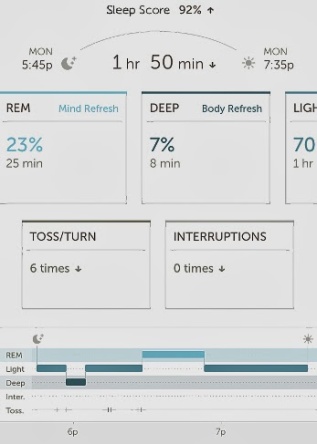


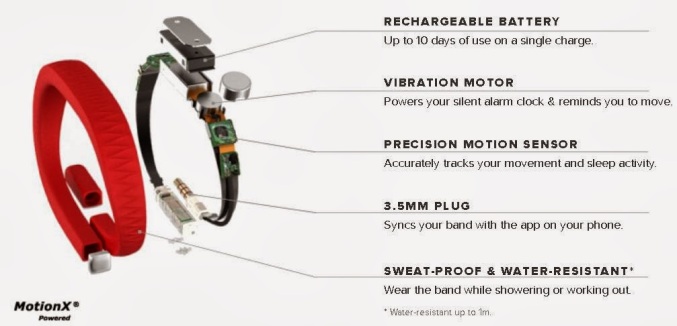
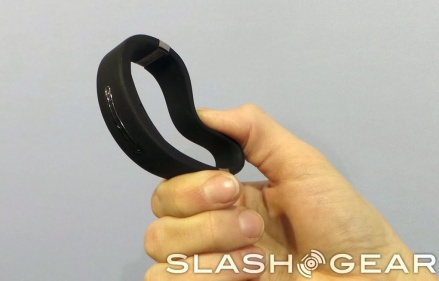




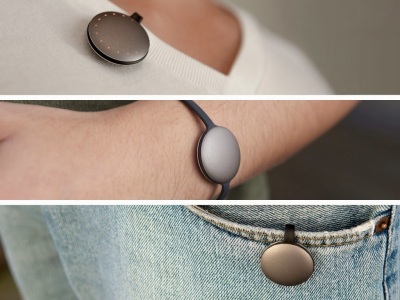

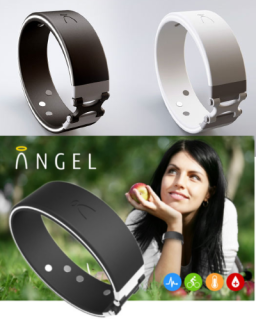
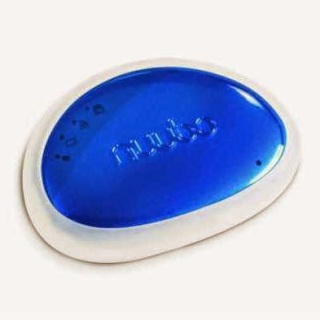





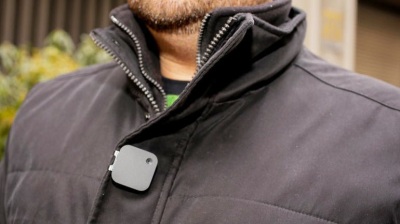





Pingback: Cool brain-computer interfacing that would be useful in dementia | Doctor Dementia and the Dementia Adventure
Pingback: Great technologies for rehabilitation | Doctor Dementia and the Dementia Adventure
Pingback: Wearable technologies that help manage neurological disorders | Doctor Dementia and the Dementia Adventure